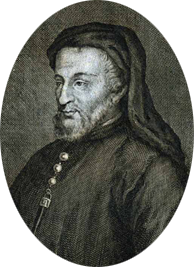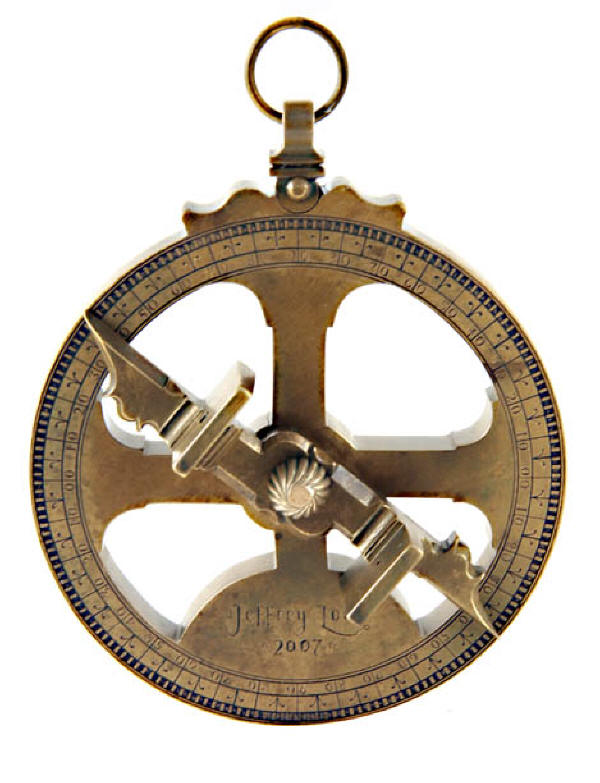

When talking about Chaucer, many people focus on his literary works but forget that he was also an astronomer. He held an usually large amount of astronomical and astrological knowledge, which he incorporated into his poetry. Astronomical and astrological references are seen throughout The Canterbury Tales. He also wrote poems strictly regarding astronomy, most notably, The Complaint of Mars, which describes an astronomical event. He wrote at least ten other poems with astronomical and astrological themes within them. Many consider Chaucer’s works to be strongly influenced by Dante, who was also fond of astronomy.
Regarding The Complaint of Mars, if the poem is analyzed by readers correctly, Chaucer described in his poem the actual transits of the planets between mid February and early May of 1385. The description of the locations of the planets Mars and Venus are extremely accurate, which shows that his astronomical skill was almost professional. He recorded astronomical data for the basis of his poem in order to accurately portray the separation of Mars from Venus. Chaucer used metaphors in the poem to describe the event, which is an interesting way to link poetry with astronomy.
Astronomical references are seen in many other works of Chaucer, such as The House of Fame, one of his earlier works, which contains the earliest known uses of the words "galaxy" and "milky way:"
Which men clepeth the Milky Wey,
For hit is whyt."
-Geoffrey Chaucer, The House of Fame

Astronomical references are seen in The Franklin's Tale, most notably involving the high tides. Dorigen promises to Aurelius that she will marry him if he makes all of the rocks on the coast of Brittany disappear. For two years, Aurelius prays to the Sun to cooperate with the Moon to cause a tide high enough to make the rocks on the shore disappear. After his prayers are not answered, he approaches a magician (the Clerk) to ask for help in the task. This magician, with supposed knowledge of the arcane, accepts a thousand pounds to help Aurelius remove all of the stones from the coast of Brittany by causing an exceptionally high tide.
It semed that alle the rokkes were aweye."
-Geoffrey Chaucer, The Franklin's Tale
References to astronomy are also seen in A Knight's Tale, especially when Theseus begins by claiming that the Aristotelian "First Mover," or the "primum mobile," creates the "Great Chain of Love," that holds the universe together in Medieval cosmology. Also, in A Knight's Tale, Chaucer designed the characters to represent certain planets. Venus represents Palamoun, Mars represents Arcite, the Moon represents Emelye, and Saturn represents Theseus. This is similarly seen in The Squire's Tale, where both stars and planets represent minor and major characters, and these characters behaved as the planets were meant to behave astrologically.
In The Squire's Tale, The King celebrated his birth on the "last day of the ides of March," which according to the Roman Calendar, is the 15th of March, 1383. On this day, the Sun had a threefold connection with the planet Mars, so the King was likely associated with Mars.
Because he was close to the exaltation,
Entering the face of Mars, and entering its mansion
In Aries.”
-Geoffrey Chaucer, The Squire's Tale


The astrolabe is a Greek invention, historically used by astronomers, navigators, and astrologers. It consists of one or more circular discs overlain with a circular object with a repetitive geometrical pattern. The disc is basically a star map, which is pierced to allow certain parts of the disc beneath it to be seen. Its many uses include locating and predicting the positions of the Sun, Moon, planets, and stars, determining local time, surveying, and triangulation. It was used in classical antiquity, the European Middle Ages, and the Renaissance for all these purposes.
